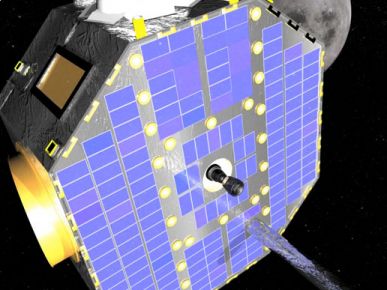The spacecraft, which was launched on Sunday from a plane flying over the Kwajalan Islands in the Pacific Ocean, will carry out the mission from orbit around the Earth

A new spacecraft has begun to explore the edge of the solar system from a strange location - an orbit around the Earth. The IBEX spacecraft mission was successfully launched on Sunday at 19:47 Israel time from a plane that took off from California, and passed over the Kwajalein Islands group in the Pacific Ocean.
IBEX will be the first spacecraft to image and map the dynamic interactions at the edge of our solar system. Two Voyager spacecraft that are in these areas, about 30 years after its creation, are able to transmit limited amounts of information about this area in space where the solar system actually ends and interstellar space begins. This is an area that is 3 times more distant from the Sun than Pluto's orbit. "No one has yet seen images of the collision at the edge of the solar system between the solar wind and interstellar space." says the lead researcher on the IBEX project, Diomid McComas of the Southwest Research Institute in San Antonio. "We know we're going to be surprised."
The spacecraft separated from the third stage of the Pegasus rocket seven minutes after its launch and the crew had already activated its command and control systems. "After 45 days of in-orbit testing, the spacecraft will begin its science mission," said Greg Fraser, mission manager on behalf of NASA's Goddard Space Flight Center in Maryland.
"The boundary of the heliosphere is huge, and the Voyager spacecraft crossed the shock wave created as a result of the collision between the solar wind and the interstellar dust particles and sampled two small areas of the boundary, 16 billion km apart," says NASA scientist Eric Kristian. Voyager 1 crossed the border in 2004 and Voyager 2 in 2007. IBEX will remain in orbit around the Earth, an elliptical orbit far removed from the Earth's magnetic field, where it will sample particles and locate their direction.
The solar wind, a stream of electrically charged gas particles moving out of the sun at a speed of about 1.5 million km/h, against the interstellar matter. This collision creates a protective bubble that surrounds our solar system - this bubble is known as the heliosphere. When the solar wind reaches the heliosphere, a shock wave is created that was experienced by the two Voyager spacecraft. Like an impressionist painter piecing together the image from tiny drops of paint, IBEX will construct the image of the outer shell of the solar system from impacting the spacecraft with electromagnetically neutral atoms. These particles are formed at the boundary of the solar system. It is important to know about this area because it protects the earth from most of the cosmic rays that could wash it.
"IBEX will map the entire sky once every six months and try to understand where these atoms are coming from and how fast they are moving. With this information we can find out what the bubble looks like, and learn about the properties of the interstellar cloud behind the bubble." says the physicist Rabbi Fonsten of the Los Alamos National Laboratories of the US Department of Energy.
IBEX is the latest in a series of small, cheap spacecraft that were quickly developed. The Southwest Research Institute developed the IBEX mission together with an international team. NASA's Goddard Center manages the Small Science Mission Program for NASA's Science Mission Directorate in Washington.

One response
What is the altitude of the spaceship's orbit?